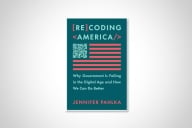You have /5 articles left.
Sign up for a free account or log in.
My psychic powers tell me that in the next few weeks, as the back-to-school rush hits, we’ll be inundated with complaints about textbook costs. This is about as risky a prediction as guessing that the sun will rise in the East.
Textbook costs are remarkably high and climbing quickly; in the context of a community college, they frequently equal or exceed the actual tuition for the class. Textbook publishers have been remarkably brazen about tamping down competition from the used-book market, whether relying on online codes, frequently updated editions, or ‘bundling’ of textbooks with ‘free’ extras that don’t come with used editions. The idea has been to push students into buying new editions, since that’s where the publisher’s profit is. (Bookstores themselves, I’m told, often make more profit on used books, which creates some interesting internal tensions.)
Financial aid often covers textbook costs, but that’s less transparent than it seems. Financial aid usually consists, at least in part, of loans that must be paid back. In some cases, financial aid includes vouchers for textbooks, but the vouchers are only good at the college bookstore. (As far as I know, the new law requiring disclosure of ISBN numbers for textbooks doesn’t address that, though I could be wrong on that.) And then there’s the uncomfortable fact that many colleges get a cut of textbook revenues, whether directly (when the bookstore is owned by the college) or indirectly (when a bookstore leases space and preferred access). In the latter case, the more profitable the bookstore, the more rent it’s willing to pay, so the incentives wind up pretty similar.
I’ve been hearing predictions of catastrophic, technology-driven change in the textbook market for years now, but haven’t seen it yet on the ground. Among the game-changers, I’m told, are the ipad, the kindle, free/open websites, and textbook rental programs.
Based on my own experience with the kindle, I’m skeptical there, at least so far. Yes, they’re cheaper than they once were, but they’re hard to use for quick thumbing-through. Note-taking is inelegant at best, and you can’t share (or sell back) downloaded copies when you’re done with them. The same seems to apply with the ipad, which is also (in my limited observation) kinda heavy for a reader.
Free/open websites are platform-independent, which is nice, and the price is right. But they require screen and internet access, they often require printing, and if they vanish, they vanish.
Textbook rentals sound promising to me, though I’m not entirely sure how highlighting or marginal note-taking works with that model. In my student days, I sometimes made some less-than-civil comments in the margins as a way of making even the driest text “interactive.” If you have to treat the book like your aunt’s sofa with the plastic still on it, I suspect that many students will take the path of least immediate resistance and simply not bother with it at all.
The new Higher Ed Authorization Act requires making public the titles and ISBN’s of assigned textbooks as early as practicable, with the goal of introducing some competition -- or at least the prospect of competition -- into the textbook market as a way to control costs. (The idea is that an enterprising student could crib the list and get the same books on Amazon for less.) In some limited contexts, that may help, but I’d be surprised if it made much of a dent overall. Too many professors wait until the last minute to pick books anyway, too many students wait until the last minute (or later) to buy them, and too many financial aid packages include nontransferable book vouchers. But at least it’s something.
Since my campus has been relatively slow to move on this, I’m eager to hear from those of my wise and worldly readers who’ve seen some or all of these tried. If you’ve taught (or studied) on a campus that used open source, or kindle, or rental solutions, how well did they work? What didn’t work? What do you wish you had known first? I’m hoping to find some practical way to help students avoid getting shocked on cost without sacrificing usefulness.



